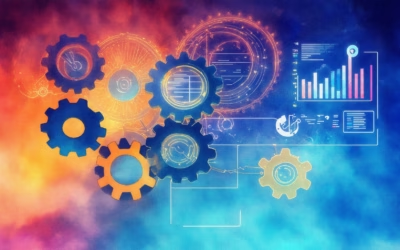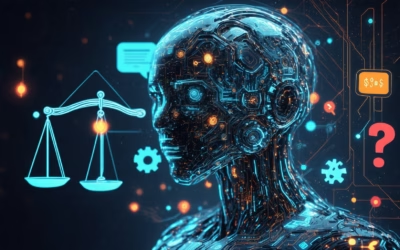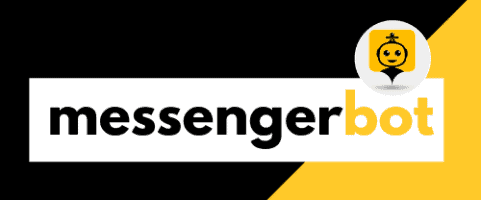In today’s digital landscape, the ability to build an AI chatbot has become an invaluable skill for businesses and developers alike. This comprehensive guide will walk you through the essential steps of creating a chatbot, from understanding the basics of AI technology to exploring the tools and platforms available for developing a chatbot. Whether you’re wondering can I create my own AI chatbot? or how to build a chatbot from scratch, this article will provide you with the insights and resources needed to embark on your chatbot journey. We will delve into the benefits of building your own chatbot, the cost factors involved, and the key technologies that power these intelligent assistants. Additionally, we will address common challenges and share best practices to simplify the chatbot development process. By the end of this guide, you’ll be equipped with the knowledge to create your own AI chat and leverage the power of AI to enhance user engagement and streamline communication.
Can I create my own AI chatbot?
Yes, you can create your own AI chatbot that mimics human conversation using various artificial intelligence technologies. Here’s a comprehensive guide on how to do it:
- Define the Purpose: Determine what you want your chatbot to accomplish. This could range from customer service to personal assistance or entertainment.
- Choose the Right Platform: There are several platforms available for building chatbots, including:
- ChatGPT: Developed by OpenAI, it uses advanced natural language processing to generate human-like responses.
- IBM Watson Assistant: Offers robust tools for creating conversational interfaces.
- Haptik AI: Focuses on customer engagement and support.
- Jasper: Known for content generation, it can also be adapted for chatbot functionalities.
- Replika: A personal AI companion that learns from interactions.
- Messenger Bot: Facebook’s platform allows you to create bots for Messenger, enhancing user engagement on social media.
- Select a Development Framework: Depending on your technical expertise, you can choose from:
- No-code platforms: Such as Chatfuel or ManyChat, which allow you to build chatbots without programming knowledge.
- Coding frameworks: If you have programming skills, consider using libraries like Rasa or Botpress for more customization.
- Design the Conversation Flow: Create a flowchart of how interactions will progress. This includes anticipating user questions and preparing responses.
- Train Your Chatbot: Use machine learning techniques to train your chatbot on relevant datasets. This will improve its ability to understand and respond accurately to user queries.
- Test and Iterate: Before launching, conduct thorough testing to identify any issues. Gather feedback and continuously refine your chatbot’s performance.
- Deploy and Monitor: Once satisfied with the chatbot’s performance, deploy it on your chosen platform. Monitor interactions to ensure it meets user needs and make adjustments as necessary.
By following these steps, you can successfully create a chatbot that effectively communicates and engages with users. For further reading on chatbot development, consider resources from OpenAI, IBM, and Haptik.
Understanding the Basics of AI Chatbots
AI chatbots are designed to simulate human conversation through advanced algorithms and natural language processing (NLP). They can be integrated into various platforms, allowing businesses to automate interactions and enhance user engagement. Understanding the core functionalities of AI chatbots is essential for anyone looking to build their own.
- Automated Responses: AI chatbots provide real-time, automated responses to user inquiries across social media platforms and websites.
- Workflow Automation: They enable businesses to create dynamic automated workflows triggered by specific user behaviors.
- Lead Generation: Chatbots help generate leads through engaging messenger-based marketing strategies.
- Multilingual Support: Many chatbots can communicate in various languages, reaching a diverse audience.
- SMS Capabilities: Some chatbots extend their functionality to mobile devices, allowing direct customer connections.
Benefits of Building Your Own AI Chatbot
Creating your own AI chatbot offers numerous advantages that can significantly enhance your business operations:
- Cost Efficiency: Automating customer interactions reduces the need for extensive human resources, leading to lower operational costs.
- 24/7 Availability: AI chatbots can operate around the clock, providing instant support to users at any time.
- Improved User Experience: By offering quick responses and personalized interactions, chatbots enhance overall user satisfaction.
- Data Collection: Chatbots can gather valuable data on user preferences and behaviors, informing business strategies.
- Scalability: As your business grows, chatbots can easily scale to handle increased user interactions without significant additional costs.
Can I Build an AI on My Own?
Building your own AI model is an achievable goal for anyone interested in technology, especially with the plethora of tools and resources available today. Here are three comprehensive steps to guide you through the process:
- Define Your Objective:
Before diving into the technical aspects, clearly outline what you want your AI to accomplish. This could range from creating a simple chatbot, like a Messenger Bot, to developing a complex machine learning model for data analysis. Understanding your goal will help you choose the right tools and frameworks.
- Choose the Right Tools and Frameworks:
There are numerous platforms and libraries available for building AI models. Some popular options include:
- TensorFlow: An open-source library developed by Google, ideal for deep learning applications.
- PyTorch: A flexible deep learning framework favored for its ease of use and dynamic computation graph.
- Scikit-learn: Perfect for beginners, this library provides simple and efficient tools for data mining and data analysis.
- Keras: A high-level neural networks API, Keras runs on top of TensorFlow and simplifies the process of building deep learning models.
For chatbot development, platforms like Dialogflow or Microsoft Bot Framework can be utilized to create conversational agents.
- Gather Data and Train Your Model:
Data is the backbone of any AI model. Depending on your objective, you may need to collect or source datasets. Websites like Kaggle and UCI Machine Learning Repository offer a variety of datasets for different applications.
Once you have your data, preprocess it to ensure quality and relevance. This may involve cleaning the data, normalizing values, and splitting it into training and testing sets. Use your chosen framework to build and train your model. Monitor its performance and make adjustments as necessary to improve accuracy.
By following these steps, anyone can embark on the journey of building their own AI model. For more in-depth guidance, consider exploring resources from reputable sources such as the Stanford University Machine Learning Course or the Deep Learning Specialization by Andrew Ng on Coursera. These platforms provide valuable insights and structured learning paths for aspiring AI developers.
Tools and Platforms for Building AI Chatbots
When it comes to building an AI chatbot, selecting the right tools and platforms is crucial for success. Here are some of the best options available:
- Messenger Bot: This platform allows you to create chatbots that can automate responses and engage users effectively across various channels.
- Brain Pod AI: Known for its multilingual AI chat assistant, Brain Pod AI offers robust features for developing sophisticated chatbots.
- Dialogflow: A Google-owned platform that provides a user-friendly interface for creating conversational agents.
- Microsoft Bot Framework: This framework supports the development of intelligent bots that can interact naturally with users.
Choosing the right platform will depend on your specific needs, such as the complexity of the chatbot you wish to create and the level of customization required. For a comprehensive overview of chatbot capabilities, check out our Messenger bot tutorials.
How is AI Chatbot Created?
Creating an AI chatbot involves a systematic approach that combines various technologies and methodologies. Understanding the process is crucial for anyone looking to build an AI chatbot effectively. Here’s a detailed look at the steps involved in creating a chatbot from scratch.
The Process of Creating a Chatbot from Scratch
The journey to create a chatbot begins with defining its purpose. Here are the essential steps:
- Define Objectives: Determine what you want your chatbot to achieve, whether it’s customer support, lead generation, or providing information.
- Choose the Right Platform: Select a platform that suits your needs. Options include building on existing platforms like Facebook Messenger or using dedicated chatbot frameworks.
- Design Conversational Flows: Map out how conversations will progress. This includes anticipating user questions and crafting appropriate responses.
- Develop the Chatbot: Utilize programming languages and frameworks to build the chatbot. Popular choices include Python, JavaScript, and various chatbot development platforms.
- Integrate AI Technologies: Implement natural language processing (NLP) and machine learning algorithms to enhance the chatbot’s ability to understand and respond to user queries.
- Test and Iterate: Conduct thorough testing to identify issues and improve the chatbot’s performance. Gather user feedback to refine its capabilities.
- Launch and Monitor: Deploy your chatbot and continuously monitor its interactions to ensure it meets user expectations and performs effectively.
Key Technologies Used in AI Chatbot Development
To successfully build an AI chatbot, several technologies play a pivotal role:
- Natural Language Processing (NLP): This technology enables the chatbot to understand and interpret human language, making interactions more natural.
- Machine Learning: By utilizing machine learning algorithms, your chatbot can learn from past interactions, improving its responses over time.
- APIs and Webhooks: These are essential for integrating your chatbot with other services and platforms, allowing for a seamless user experience.
- Cloud Computing: Leveraging cloud services can enhance the scalability and performance of your chatbot, ensuring it can handle varying loads of user interactions.
By understanding the process and technologies involved in creating a chatbot, you can effectively build your own chatbot that meets your specific needs and enhances user engagement.
How is AI Chatbot Created?
Creating an AI chatbot involves a systematic approach that can be divided into two main phases: conversation design and bot development. Here’s a detailed guide to each phase:
The Process of Creating a Chatbot from Scratch
- Conversation Design:
- Define Objectives: Clearly outline the purpose of the chatbot. Is it for customer service, information retrieval, or entertainment?
- User Personas: Identify the target audience and their needs. Understanding user personas helps tailor the conversation flow.
- Mapping Interactions: Utilize tools like flowcharts or conversation trees to visualize all potential user interactions. This step is crucial for anticipating user queries and designing appropriate responses.
- Script Development: Write scripts for various scenarios, ensuring the language is natural and engaging. This includes greetings, FAQs, and fallback responses for unrecognized queries.
- Bot Development:
- Choose a Platform: Select a development platform or framework that suits your needs. Popular options include Microsoft Bot Framework, Google Dialogflow, and Rasa. These platforms provide tools for natural language processing (NLP) and integration capabilities.
- Integrate NLP: Implement NLP to enable the chatbot to understand and process user inputs effectively. This can involve training the bot with sample dialogues and using machine learning models to improve accuracy over time.
- Build and Test: Develop the chatbot using the chosen platform, incorporating the designed conversation flows. Rigorous testing is essential to identify and fix bugs, ensuring the bot responds accurately to user inputs.
- Deployment: Once testing is complete, deploy the chatbot on the desired channels, such as websites, mobile apps, or messaging platforms like Facebook Messenger. Ensure it is accessible and user-friendly.
Key Technologies Used in AI Chatbot Development
To effectively build an AI chatbot, several key technologies are essential:
- Natural Language Processing (NLP): This technology allows chatbots to understand and interpret human language, making interactions more natural and intuitive.
- Machine Learning: By utilizing machine learning algorithms, chatbots can learn from user interactions, improving their responses over time.
- Cloud Computing: Leveraging cloud services enables scalable storage and processing power, essential for handling large volumes of user data and interactions.
- APIs: Application Programming Interfaces (APIs) facilitate integration with other software and services, enhancing the chatbot’s capabilities and reach.
By understanding the process and technologies involved in creating a chatbot, you can effectively build your own chatbot that meets user needs and enhances engagement.
Building Your Own Chatbot: Real-World Examples
Creating a chatbot can seem daunting, but examining real-world examples can provide valuable insights into the process. By exploring successful implementations, you can gather ideas and strategies that will help you build your own AI chatbot effectively.
Case Studies of Successful AI Chatbots
Many businesses have successfully integrated AI chatbots into their operations, enhancing customer engagement and streamlining processes. For instance, companies like IBM and Microsoft have developed sophisticated chatbots that handle customer inquiries, provide support, and even assist in sales. These chatbots utilize advanced natural language processing (NLP) techniques to understand user intent and deliver accurate responses.
Another notable example is the use of chatbots in the e-commerce sector. Brands have implemented chatbots to assist customers with product recommendations, order tracking, and even payment processing. This not only improves customer satisfaction but also increases conversion rates. By analyzing these case studies, you can learn how to create a chatbot that meets specific business needs and enhances user experience.
Lessons Learned from Building Chatbots
When building your own chatbot, there are several key lessons to consider:
- Understand Your Audience: Tailor your chatbot’s responses and functionalities to meet the needs of your target audience. Conducting user research can help you identify common queries and preferences.
- Iterate and Improve: Launching your chatbot is just the beginning. Continuously gather feedback and analyze performance metrics to refine its capabilities and improve user interactions.
- Utilize Available Resources: Leverage platforms like Brain Pod AI for multilingual support and advanced features that can enhance your chatbot’s functionality.
- Stay Updated on Trends: The field of AI chatbot development is rapidly evolving. Keep an eye on emerging technologies and best practices to ensure your chatbot remains competitive.
By applying these lessons and drawing inspiration from successful examples, you can effectively build an AI chatbot that meets your business objectives and enhances user engagement.
Is Making an AI Chatbot Hard?
Creating an AI chatbot can be challenging, especially for those without a background in computer science or programming. However, with the right tools and resources, the process can be made significantly easier. Here’s a comprehensive guide to understanding the complexity of programming an AI chatbot:
Challenges in Building a Chatbot
- Understanding AI Chatbots: AI chatbots utilize natural language processing (NLP) and machine learning algorithms to understand and respond to user queries. This requires a foundational knowledge of these technologies.
- Choosing the Right Platform: There are various platforms available that simplify the chatbot development process, such as Dialogflow, Microsoft Bot Framework, and IBM Watson. These platforms provide user-friendly interfaces and pre-built templates that can help beginners get started without extensive coding knowledge.
- Programming Languages: Familiarity with programming languages such as Python, JavaScript, or Java can be beneficial. Python, in particular, is widely used in AI development due to its simplicity and the availability of libraries like TensorFlow and NLTK for NLP tasks.
- Utilizing Messenger Bots: For those looking to create chatbots for social media platforms, Messenger Bots on Facebook provide a straightforward way to engage users. Facebook offers a robust API that allows developers to integrate AI functionalities easily.
- Learning Resources: Numerous online courses and tutorials are available to help you learn the necessary skills. Websites like Coursera, Udemy, and edX offer courses specifically focused on chatbot development and AI programming.
- Community and Support: Engaging with online communities such as Stack Overflow or GitHub can provide valuable support and insights from experienced developers. These platforms allow you to ask questions, share your progress, and learn from others’ experiences.
- Iterative Development: Building an AI chatbot is an iterative process. Start with a simple version and gradually add more complex features as you become more comfortable with the technology.
In conclusion, while programming an AI chatbot may seem daunting at first, leveraging existing platforms and resources can significantly ease the process. With dedication and the right tools, anyone can create an effective AI chatbot. For further reading, consider exploring resources from reputable sources such as the Association for the Advancement of Artificial Intelligence (AAAI) and the Journal of Artificial Intelligence Research (JAIR).
Tips for Simplifying the Chatbot Development Process
- Start Small: Begin with a basic chatbot that can handle simple queries. This will help you understand the fundamental concepts before moving on to more complex functionalities.
- Utilize Pre-Built Templates: Many platforms offer templates that can be customized to fit your needs. This can save time and reduce the complexity of the development process.
- Focus on User Experience: Design your chatbot with the end-user in mind. Ensure that it provides clear, helpful responses and is easy to interact with.
- Test Frequently: Regular testing during development can help identify issues early on. Use feedback to make iterative improvements to your chatbot.
- Leverage Community Knowledge: Don’t hesitate to seek help from online communities. Engaging with others can provide insights and solutions to common challenges.
By following these tips, you can simplify the process of building your own chatbot and enhance your chances of success. For those interested in a more guided approach, consider exploring the quick guide to creating an AI chatbot available on our platform.
How to Make an AI Chatbot in Python
Creating an AI chatbot in Python is a popular choice due to the language’s simplicity and the powerful libraries available. Python offers a range of tools that facilitate the development of intelligent chatbots, making it accessible for both beginners and experienced developers.
Python Libraries for AI Chatbot Development
Several Python libraries can significantly streamline the process of building an AI chatbot. Here are some of the most widely used:
- NLTK (Natural Language Toolkit): A comprehensive library for natural language processing (NLP) that provides easy-to-use interfaces for over 50 corpora and lexical resources.
- spaCy: A fast and efficient library designed for production use, spaCy excels in large-scale NLP tasks and is ideal for building chatbots that require advanced language understanding.
- ChatterBot: This library allows you to create chatbots that can learn from conversations. It uses machine learning algorithms to generate responses based on past interactions.
- Flask: A lightweight web framework that can be used to deploy your chatbot as a web application, making it accessible to users through a web interface.
By leveraging these libraries, you can enhance the functionality and responsiveness of your chatbot, ensuring it meets user needs effectively.
Step-by-Step Guide to Creating a Chatbot in Python
Building a chatbot in Python involves several key steps:
- Define the Purpose: Determine what you want your chatbot to accomplish, whether it’s answering FAQs, providing customer support, or engaging users in conversation.
- Set Up Your Environment: Install Python and the necessary libraries. You can use pip to install libraries like NLTK, spaCy, or ChatterBot.
- Design the Conversation Flow: Outline how interactions will progress. Consider user intents and how the chatbot should respond to various inputs.
- Implement NLP: Use libraries like NLTK or spaCy to process user inputs and extract meaningful information.
- Train Your Chatbot: If using machine learning, feed your chatbot training data to improve its responses over time.
- Test and Iterate: Conduct thorough testing to identify areas for improvement. Gather user feedback and refine the chatbot’s capabilities.
Following these steps will help you create a functional and engaging AI chatbot using Python, allowing you to build a chatbot that effectively meets user expectations.







